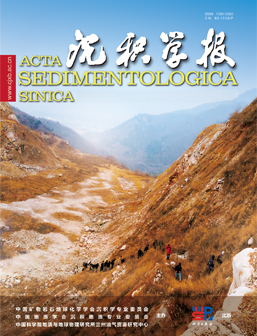Sedimentary facies and sedimentary model of marine clastic rocks of Shiqiantan Formation in Shiqiantan Sag, Junggar Basin
doi: 10.14027/j.issn.1000-0550.2024.102
- Received Date: 2024-07-12
- Available Online: 2024-11-26
-
Key words:
- Junggar Basin /
- Shiqiantan Formation /
- sedimentary system /
- sedimentary phases /
- paleomorphology /
- source-sink system
Abstract: [Objective] In recent years, the exploration of new type of natural gas reservoirs in marine clastic rocks of Shiqiantan Formation in Shiqiantan Depression of Jundong Region has gained significant breakthroughs, but the depositional characteristics and patterns of Shiqiantan Formation are not clear, and the configuration of source and storage is not realized, which restricts the next step of exploration and deployment.[Methods] The sedimentary paleomorphology of Shiqiantan Formation was recovered on the basis of isochronous stratigraphic division and comparison, and different sedimentary phases were identified by combining seismic phases, continuous well sections and microscopic depositional features such as cores and thin sections, the evolutionary process of sedimentary system was constructed, and the sedimentary evolutionary model was established. [Results and Conclusions] The Shiqiantan Formationdevelops a complete three-stage stratigraphic sequence, which can be divided into the early transgression systems tract (ETST), the late transgression systems tract (LTST) and the highstand systems tract (HST) in combination with the paleogeomorphic slope folding. During the sedimentary period of the Shiqiantan Formation, the overall depression is a narrow and elongated sea trough running in a northwest southeast direction, with various types of ancient landforms such as rifted sea troughs, multi-level gentle slopes, fault controlled steep slopes, and eroded gullies. Identify sedimentary facies types such as nearshore underwater fans, fan deltas, slope fans, and basin floor fans through typical logging data, rock cores, and seismic facies characteristics. The ancient landforms have a significant controlling effect on the distribution of sedimentary facies. Fan deltas and nearshore underwater fans are mainly distributed near the southern fault controlled steep slope zone, while slope fans are mainly developed on the northern multi-level slope break gentle slope zone, and basin floor fans are mainly developed in the trough. The entire sedimentary process formed an evolutionary model of multi-stage "stacked tile style retrogradations" of submarine fan slope fan sedimentation under the background of rapid marine invasion and large-scale braided river delta sedimentation in HST. High quality mature source rocks are developed in the transgressive domain, and the basin floor fans and slope fans on the "source" and "source side" of the northern gentle slope zone can form a "finger shaped interaction" favorable source and reservoir configuration with high-quality marine source rocks, with superior storage conditions, making it a favorable target for the next step of hidden oil and gas exploration.
| Citation: | Sedimentary facies and sedimentary model of marine clastic rocks of Shiqiantan Formation in Shiqiantan Sag, Junggar Basin[J]. Acta Sedimentologica Sinica. doi: 10.14027/j.issn.1000-0550.2024.102 |






 DownLoad:
DownLoad: